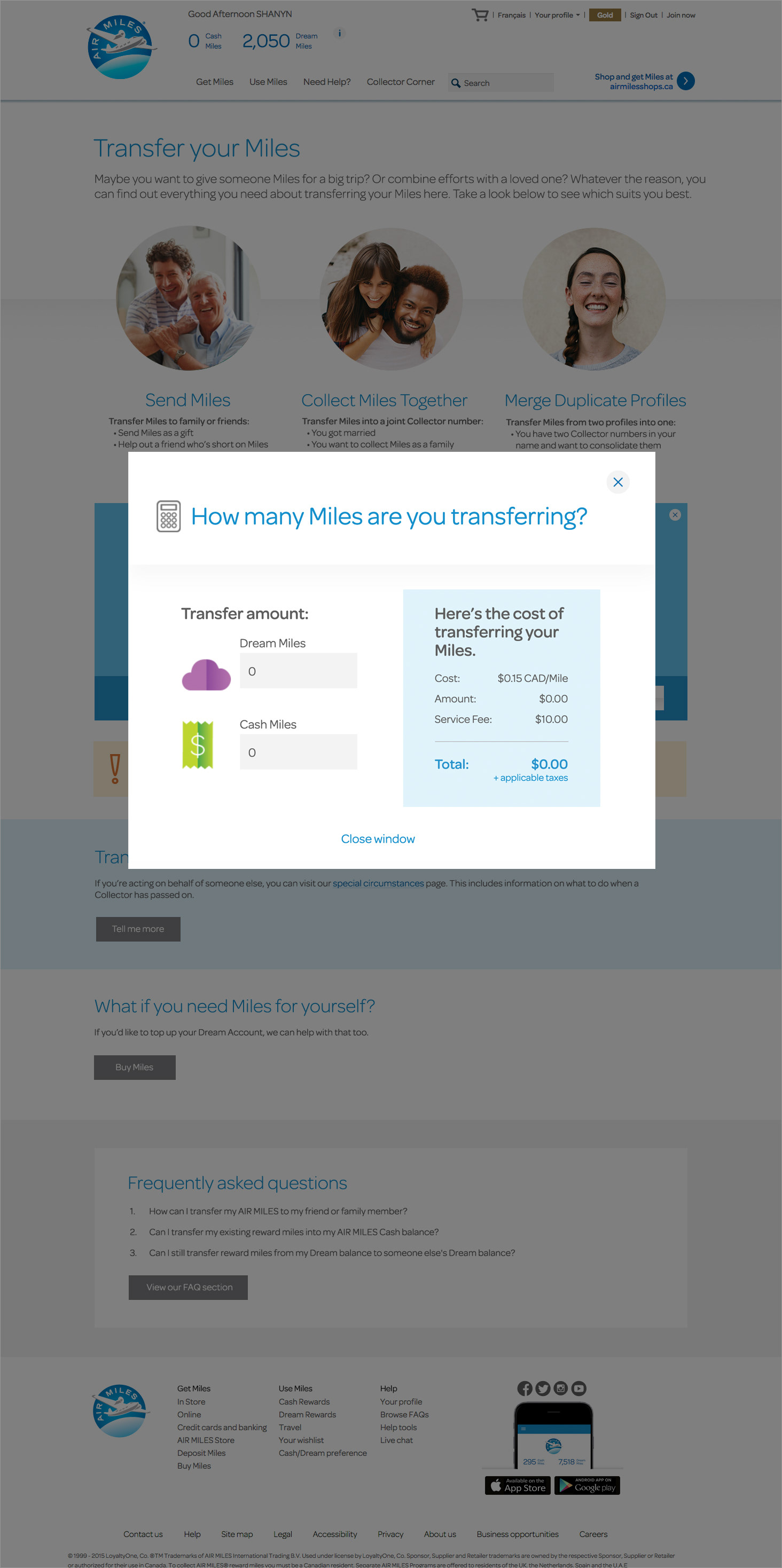An iterative design approach for transferring Miles between accounts, or merging duplicate accounts on desktop & mobile platforms.
Company: Loyalty One • My role: Senior UX/UI Designer
The problem
When AIR MILES Collectors wanted to transfer their miles to another person, the only way to do it was by calling the Call Center. After waiting on hold for over 20 minutes (due to high call volumes), Collectors would then be informed by an agent that they needed to pay a fee to transfer their miles. This news caused them to become notably upset, resulting in a negative experience while also costing the company money for servicing the calls.
The opportunity
Reduce phone calls to the Call Centre for transferring Miles by allowing Collectors to self-serve online and calculate the cost.
Understanding the scenarios
There were 3 different options for transferring Miles:
1. Sending miles as a gift
2. Collecting Miles with a spouse or as a family
3. Merging duplicate accounts
2. Collecting Miles with a spouse or as a family
3. Merging duplicate accounts
My design process
Taking a lean approach, I partnered with a UX researcher from our team to assist in evaluating a range of concepts with users, with the aim of gauging their comprehension levels and task completion ease. Following several rounds of iterations and testing, these are the designs that yielded the best results.
Phase 1: Create landing page with calculator + call centre to complete transaction
This page alone reduced call volume by 83% and of those who did call, over 78% completed the transaction.


Phase 2: Self-serve transfer miles online - desktop & mobile
Multiple iterations were created and tested. This version tested the best amongst users for comprehension.






The impact
By introducing an online calculator to inform our Collectors about the fees involved in transferring miles, more Collectors were able to determine the fees based on the quantity of miles they wished to transfer before contacting the call center, leading to fewer instances of frustration and dissatisfaction.
As a direct result of implementing the online calculator, our call abandonment rate decreased significantly from 86% to less than 12%. The Phase 1 solution was so successful, the head of the call center paused building out Phase 2 after evaluating the cost and value in comparison to other needs at the time.
Learnings
• Sometimes it's little changes that can make a big difference.
• Validating designs through research can provide huge cost savings.